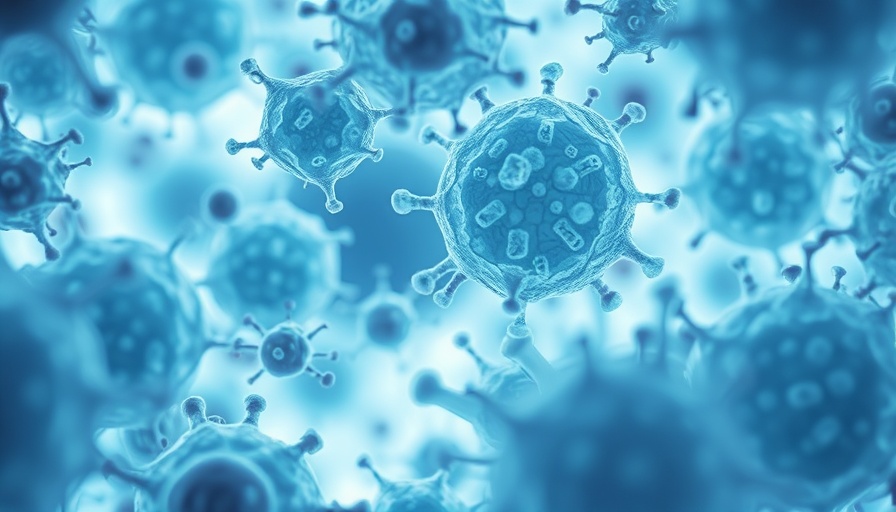
Understanding the Link Between Muscle Mass and CAR T-Cell Therapy Outcomes
In recent studies, an intriguing correlation has emerged between muscle mass and the effectiveness of chimeric antigen receptor (CAR) T-cell therapy for lymphoma patients. Specifically, sarcopenia, or muscle loss often associated with cancer cachexia, has been linked to poorer outcomes. This connection highlights the urgent need for further research as we strive to optimize treatment strategies and improve overall patient survival.
What Is Sarcopenia and Why It Matters?
Sarcopenia is characterized by the progressive loss of skeletal muscle mass and strength and is prevalent in individuals suffering from cancer. For lymphoma patients undergoing CAR T-cell therapy, baseline sarcopenia was present in over half of those studied, leading to significantly lower median overall survival rates compared to their nonsarcopenic counterparts (10.5 months versus 34.3 months). These findings suggest that muscle mass isn’t just a superficial measure of health; it's an important indicator of how well a patient might respond to advanced therapies.
Therapeutic Implications and Future Directions
As patients undergo CAR T-cell therapy, inflammatory responses can exacerbate muscle loss, prompting researchers to explore how addressing sarcopenia might improve treatment outcomes. With a staggering one-third of patients experiencing more than 10% muscle loss within the first month of therapy, the authors of the study recommend strategies that focus on diet, exercise, and fatty acid metabolism. The possibility of enhancing recovery through nutritional support is a promising new avenue for healthcare professionals working with these patients.
Metabolic Changes: What Do They Indicate?
The study also highlighted interesting shifts in serum metabolites during treatment. Increases in purine metabolites during the initial weeks came first, followed by spikes in triglyceride levels after that. These metabolic changes not only reflect the high energy demands of the body during treatment but also suggest that monitoring these metabolites could provide deeper insights into the individual’s response to therapy.
Addressing Challenges and Exploring New Frontiers
While the findings are promising, awareness of the limitations of the study is crucial. The retrospective design and relatively small participant size may impact the broader applicability of results. More extensive, multi-center trials are needed to better understand these dynamics across diverse patient populations. Importantly, clinicians and researchers will need to establish reliable metrics for evaluating muscle mass changes more efficiently, potentially incorporating advanced imaging techniques and standardized assessments.
Practical Insights for Patients and Families
What does this mean for lymphoma patients and their families? It underscores the importance of early assessment of muscle health. For patients, incorporating strength training, balanced diets rich in protein, and regular physical activity could be key strategies in maintaining muscle mass while undergoing treatment. Moreover, this proactive approach may not only help improve tolerability to treatment but could potentially enhance the overall effectiveness of therapy.
A Call for Action in Oncology Care
As healthcare providers continue to innovate, integrating muscle health into cancer treatment plans could become a standard practice. For caregivers and families, advocating for comprehensive assessments that include evaluations of muscle mass and activity levels could help ensure that patients receive optimal care tailored to their needs.
In conclusion, as we deepen our understanding of the interplay between muscle mass and CAR T-cell therapy, we open up pathways for enhancing patient care and improving treatment outcomes. If you or someone you know is navigating lymphoma treatment, consider discussing strategies to monitor and boost muscle health with your healthcare team.
 Add Row
Add Row  Add
Add 



Write A Comment